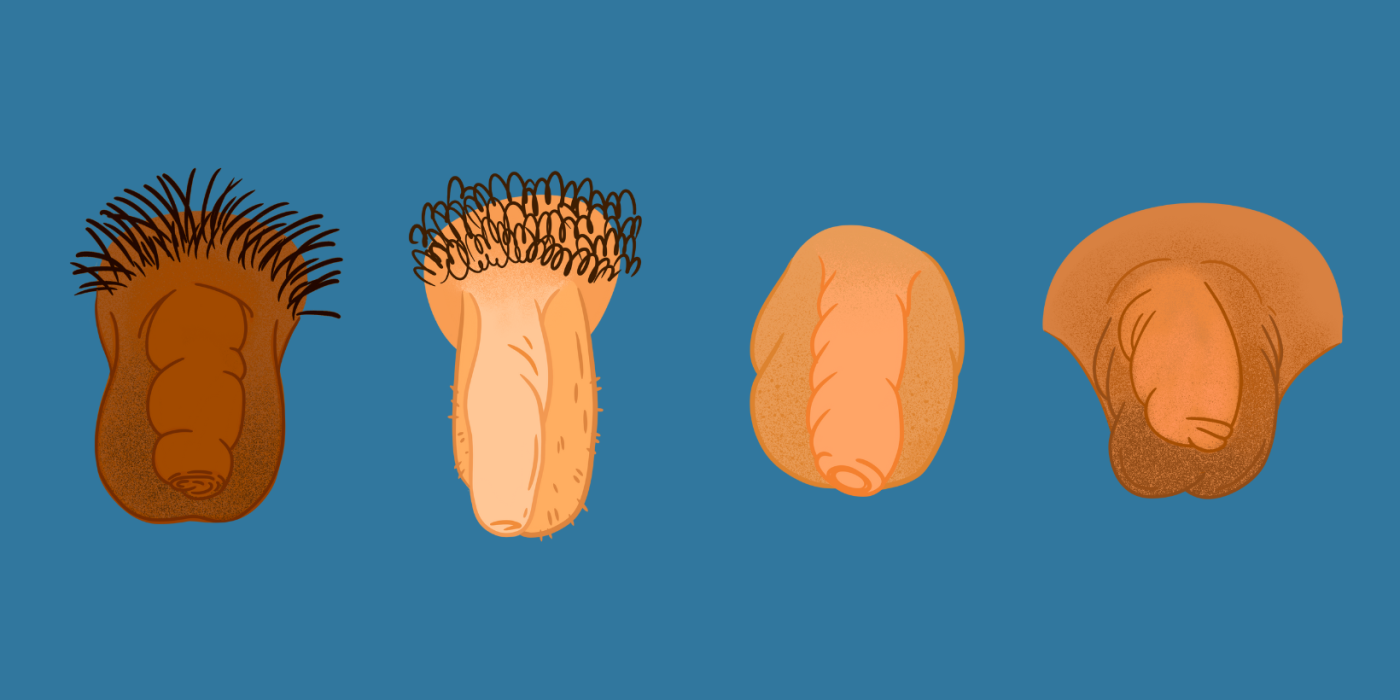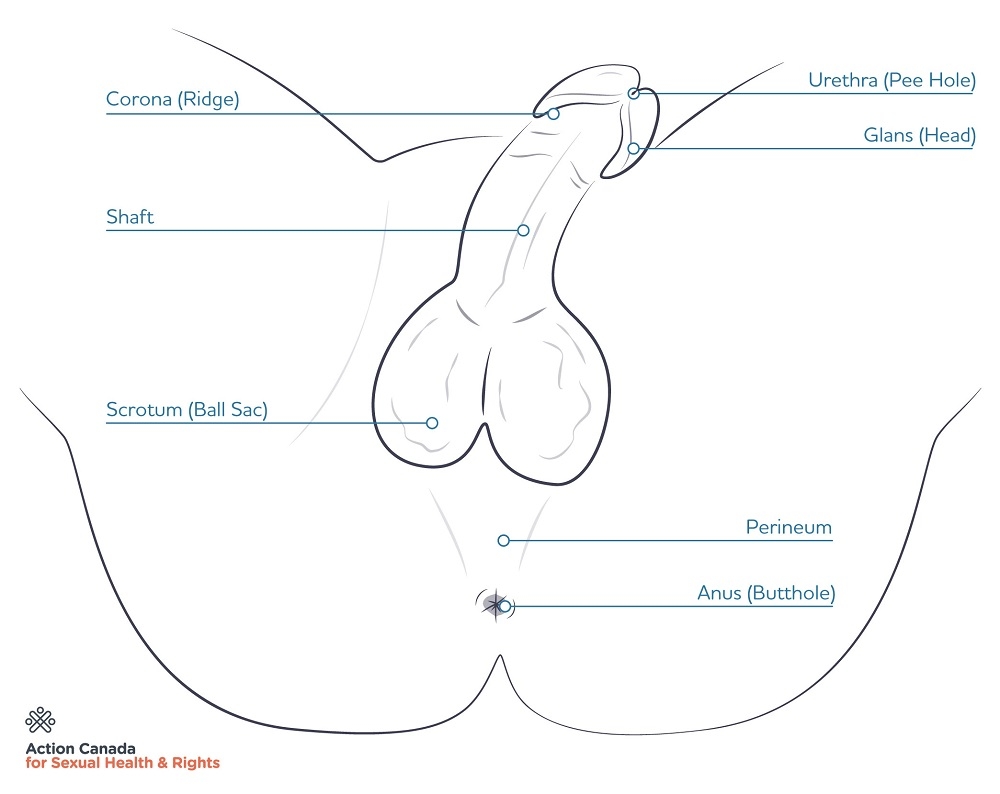See below for definitions and diagrams for bodies that have penises and testicles. These are just one representation of what bodies can look like. Everyone's body is different in its own way.
Note: We have used words for body parts that you may not use or relate to in the same way. We have used these words as they are commonly known and encourage you to use the language that feels best for you.
Outer Bits - The Penis, Frenulum, Scrotum, And Testicles
Everyone’s body is different and that is true for penises too. Penises vary in size and width. They can be smooth or bumpy, straight or curved, and differ in color and hairiness. The labelled diagrams on this page are meant to help identify different parts of reproductive organs. Below is an illustration of some of the different ways penises and testicles can look.

Penis
The penis is made up of several parts:
- The shaft or body of the penis (from the top of the penis to where it connects to your lower body).
- The glans or the head or tip of the penis, which may be covered by foreskin. This is where the opening of your urethra (pee hole) is, where urine and semen come out.
- The foreskin is a layer of skin that covers the head of the penis. The foreskin and glans are lightly joined at birth and usually separate around puberty. If you forcefully pull it back, it may tear.
- The length of the foreskin determines how much of the glans is covered when the penis is flaccid or erect.
Note: Some people don’t have a foreskin because it was removed through a procedure called circumcision.
- The frenulum is where the foreskin meets the bottom of the penis. It usually looks like a little V below the head of the penis. Many people who are circumcised will still have a frenulum and it can be very sensitive to touch.
Scrotum
The scrotum is the sac or pouch of skin that holds the testicles below the penis. The scrotum may change depending on temperature – when it’s cold, it can pull the testicles tighter to the body. If it’s hot, it can loosen and allow the testicles to hang away from the body to regulate temperature. The muscle that is responsible for moving your scrotum and testicles closer or further away from your body is called the cremaster.
Testicles
The testicles (or “balls”) are two ball-like glands that hang in the scrotum. It is common for one testicle to hang lower than the other. Not everyone will have two visible testicles (because of surgery or if one testicle has not descended from inside the body). The testicles produce sperm and hormones, including testosterone.


Inner Bits - The Urethra, Prostate, And More!
Inside the body is a whole network of parts and organs that are involved in sexual health. Check below to learn more about the parts we can't easily see.
Urethra
The urethra is the long inner tube in your body that brings pee from the bladder out through the penis. Usually, the pee hole is on the tip of the head but some people’s urethra is on the underside of the penis’ shaft because of a condition called hypospadia.
Prostate
The prostate is an internal gland that is found between the bladder and penis just in front of the rectum. It is roughly the size of a golf ball and creates a fluid that makes up part of semen. It is sensitive to the touch and many people find it pleasurable to stimulate the prostate through the wall of the rectum.
Root
The root of the penis is the part of the penis that is tucked up inside the pelvis and attached to the pubic bone.
Epididymis
The tube where the sperm matures and sits prior to ejaculation. The epididymis connects each testicle to its vas deferens (the tube that carries the sperm out during an ejaculation).
Vas Deferens
The narrow long tube that carries sperm from the epididymis to the seminal vesicles where it is then turned into semen before it is ejaculated.
Seminal Vesicles
Two small organs located below your bladder that produce a fluid that makes up part of semen.
Semen
The milky fluid that sperm moves around in, which comes out during ejaculation.
Cowper’s glands
Located under the prostate and attached to your urethra, these glands produce pre-ejaculate (also known as pre-cum) which helps lubricate your urethra, making it easier for semen to move around and get pushed out during ejaculation.

Taking Care of Your Penis and Testicles
This section offers general tips for maintaining a healthier penis and testicles:
- Gently wash your penis every day. Carefully pull back and clean under the foreskin (if you have a foreskin), as well as the tip of your penis (the glans) using only water or a gentle soap. You don’t need to scrub this sensitive area.
